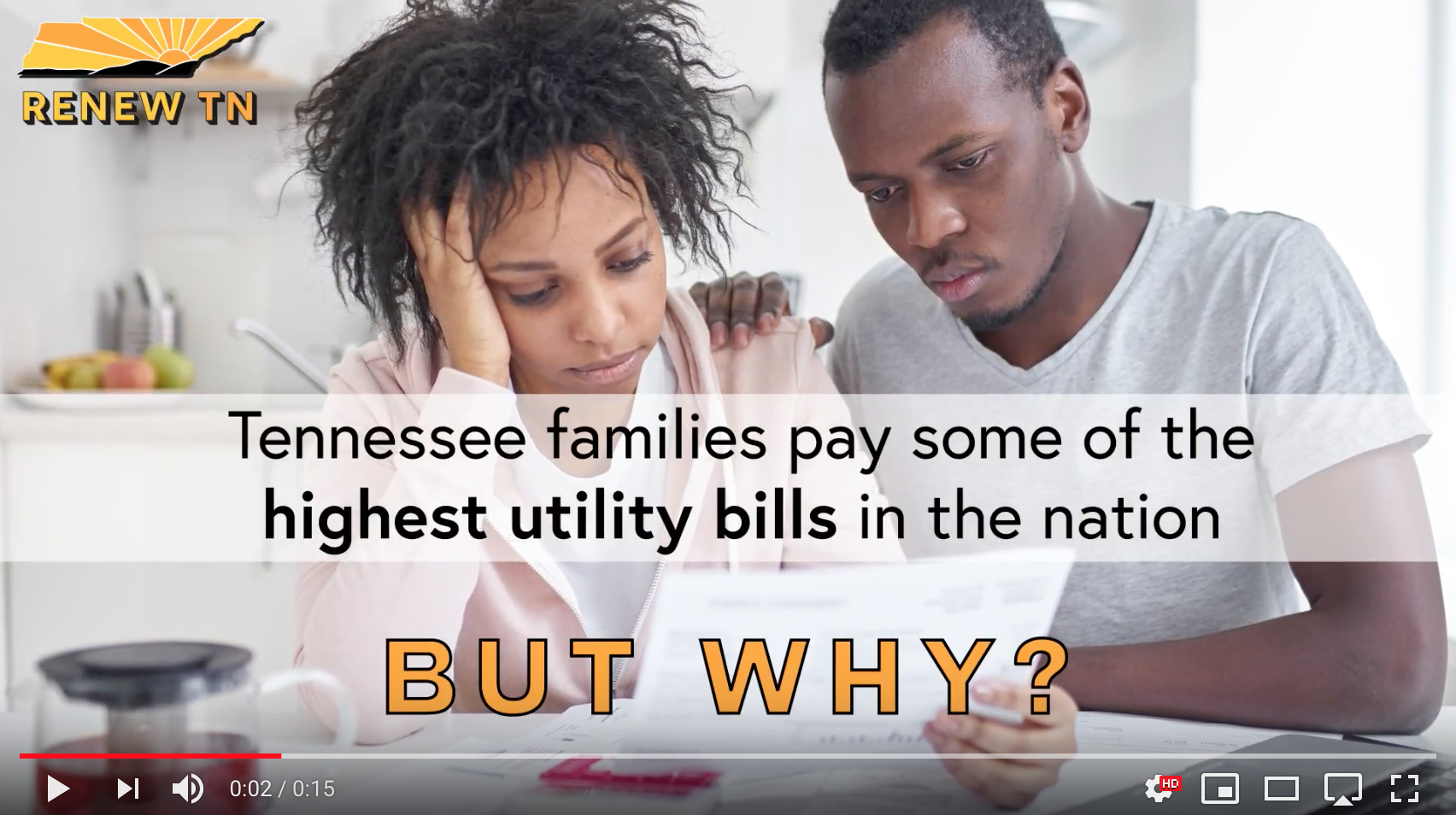TVA has long touted and been given congratulations on its low rates. But rates are not the whole picture. As a customer, you pay a bill, not a rate, and bills in our region are among the highest in the nation. You have probably wondered more than once, “Why is my electricity bill so high, and what can I do this month to lower it?”
Your electricity bill seems simple. Your local power company (which is supplied by TVA) says you owe them a certain amount each month. But how do utilities come up with your monthly bill? And going a step further, what can you do to control that bill? As a customer, you have a right to understand how you are being charged by the utility.
Tennessee residential customers have some of the largest electricity bills in the country, ranking at #7. That’s despite also being #7 for the lowest rates in the country. (These are based on the Energy Information Administration’s data for 2016. EIA also has mapped these statistics.)
So why the disconnect? Primarily because customer usage is so high – because TVA has fallen behind in investing in energy efficiency.
Here are the things that drive up an electricity bill:
- High rates
- High fixed fees
- High usage
- Any combination of these
Your electricity bill is made up of two basic parts: usage cost and fixed fee (click here to see SACE Executive Director Dr. Stephen Smith explain this in just one minute!).
Bills Part 1: Usage Cost
The usage cost is your electricity rate multiplied by how much electricity you used that month. Your usage is the easiest part of the bill for you to control. It goes up if you leave the lights on longer, it goes down if you turn them off. There are many ways you can reduce the usage cost portion of your electricity bill on your own; there are lists of actions you can take all over the internet (see here, here, and here). Some utilities even offer rebates or other incentives to help you lower your usage by weatherizing your home and purchasing efficient appliances.
Some might claim that customers in the Southeast have high bills because we use more electricity, since electric space heating is prevalent here. While it is true that non-electric space heating is more prevalent in other parts of the country, this explains a small portion of the difference, at best. Households in the South consume less electricity for heating, on average, than households in the Northeast or Midwest.
The bulk of the difference comes down to less energy efficiency funding and poor-to-non-existent energy efficiency policies. TVA could make energy efficiency a priority and help customers lower their bills, but so far they haven’t.
Bills Part 2: Fixed Fees
The second basic part is the fixed fee. This is exactly what it sounds like: a fee that is the same each month, no matter how much or how little electricity you use. If you live in a 1-bedroom apartment in a city you will pay the same fixed fee as someone with a large house far from town. Fixed fees differ by utility, but are usually the same for all customers in a certain class (i.e. residential, small commercial, industrial).

You do not have direct control of the fixed fee that appears on your bill. Even if you used no electricity in a month, the utility would still charge you a fixed fee because you had the option of turning on a light. The only way to completely avoid paying a fixed fee is to disconnect completely from the electric grid.
Customers in the Tennessee Valley have been experiencing higher bills in the last few years as TVA approves increases in fixed fees at local power companies. Increases in fixed fees raise electricity bills and also reduce the amount of control you as a customer have over your bill through the choices and investments you make to reduce how much you use.
Consider an example of two customers of neighboring utilities with similar usage. Customer A has a fixed fee of $18/month and Customer B has a fixed fee of $48/month. Both customers have an energy rate of $0.09/kWh and both use 1,200 kWh each month, on average. If they both reduce their usage by 30% to 840 kWh per month Customer A’s bill drops 26% from $126 to $94, while Customer B’s bill drops only 21% from $156 to $124. By ratcheting up fixed fees, TVA and the local power utilities that serve their residential customers are taking control away from customers.
If you are a customer of TVA, you have the opportunity this week to take back control, or at least speak your mind. TVA is regulated by a 9-member Board of Directors that is nominated by the President and confirmed by the Senate. They are meeting this Wednesday, August 22, 2018, in Knoxville, Tennessee. Join your fellow TVA customers by telling the TVA Board to stop increasing fixed fees and get back to their mission of stewarding the Valley’s natural resources and improving the lives of its residents.
If you are reading this after August 22, 2018, fear not, the TVA Board meets four times a year. Join the RenewTN campaign to find out ways to make your voice heard.



